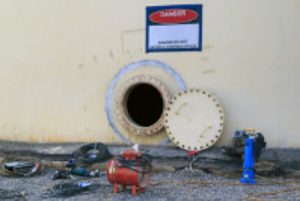 Air testing is required for two distinct purposes: evaluation of the hazards of the permit space and verification that acceptable conditions exist for entry into that space.
Air testing is required for two distinct purposes: evaluation of the hazards of the permit space and verification that acceptable conditions exist for entry into that space.
Evaluation Testing:
The atmosphere within a confined space must be tested using equipment that is designed to detect the chemicals that may be present at levels that are well below the defined exposure limits.
Evaluation testing is done to:
- Determine what chemical hazards are or may become present in the space’s atmosphere, and
- Identify what steps must be followed and what conditions must be met to ensure that atmospheric conditions are safe for a worker to enter the space.
The testing results and the decisions about what steps must be followed before entry must be evaluated by, or reviewed by, a technically qualified professional.
Bump Testing:
OSHA defines a bump test as “a qualitative function check in which a challenge gas is passed over the sensor(s) at a concentration and exposure time sufficient to activate all alarm settings.”
In English, the bump test is the process that verifies “the performance of the gas detector and ensures that sensors are responding to their target gas.”
OSHA suggests that a bump test “should be conducted before each day’s use in accordance with the manufacturer’s instructions.” A bump test frequency is to be decided by the manufacturer’s instructions.
REMEMBER: A CONFINED SPACE IS A DANGEROUS PLACE!!
Download flyer: STOTW_802_Air Sampling in Confined Spaces Download Spanish flyer: STOTW_802_Air Sampling in Confined Spaces_esp

